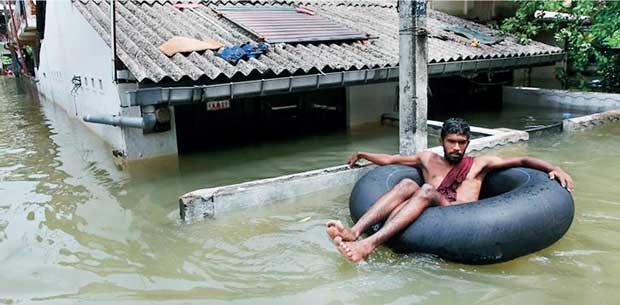21 Jul 2016 - {{hitsCtrl.values.hits}}


Today more people live in cities than in the countryside worldwide. We look to our cities for economic opportunities and for all things bigger, better and newer. To quote United Nations secretary-general Ban Ki-Moon, “Urbanisation is a driving force as well as a source of development. It has the power to change and improve the lives.” Yet, cities will only remain engines of growth if they are made far more resilient to the growing threat of natural hazards.
Cities have been at the sharp end of the world’s costliest or deadliest disasters in recent years. Among them: the tsunami that tore into Fukushima in 2011, the great floods that submerged Bangkok in the same year, Hurricanes Sandy that hit New York in 2012 and Katrina in New Orleans in 2005, and among the costliest worldwide in human losses, Typhoon Haiyan, which devastated the city of Tacloban in the Philippines in 2013. Extreme weather events do not, of course, choose cities. But when these hazards strike, the sheer number of people and their assets are most vulnerable.
Actions and decisions as a nation
Disasters are not solely determined by hazards of nature; our vulnerabilities and exposure determine how these hazards affect us, as countries, cities, and individuals. The good thing is that our vulnerabilities and exposure are also determined by actions and decisions as a nation, as a city, and as individuals. In other words, we can protect ourselves. But do we?
When we look at how cities are growing it is clear that this is not being matched by the appropriate increases in disaster protection and resilience. It makes no sense that wealth, assets, and capital are built up and then left defenseless—or with woefully inadequate defenses—against the hazards of nature.
There are huge country differences. While New Orleans had levees, these crumpled and gave way to the rising waters. Tacloban City was unprotected because it was in the direct pathway of the storm with inadequate defenses, exposing densely populated informal settlements. Japanese cities have strict aseismic building designs and high-tech, geographic information system- based, hazard maps, but they too are exposed and highly vulnerable.
Singapore too, which is known to be low on disaster risk, has suffered from major flash floods, such as the Orchard Road flood in December 2011. Meteorological Services indicates that rainfall has increasingly become more intense over the past thirty years. The government is responding with investment to upgrade underground water storage facility, and improving the capacity to forecast natural hazards.
Unmanaged urbanization
Unmanaged urbanization has led to the destruction of natural defenses and systems. Deforestation hastens soil erosion which can trigger floods and landslides. A number of cities on coastal plains and deltas have been extracting groundwater at rates faster than they can replenish, causing these cities to literally sink through subsidence. Jakarta, Bangkok, and Beijing are all affected by subsidence; Beijing by as much as 11 centimeters per year.
Cities located in flood-prone deltas must re-engineer water systems to prevent flooding. With its regular flooding, Jakarta is building a 23.5 kilometer canal to carry the overflow from its seven major rivers to the sea. Tokyo is also rebuilding its banks to strengthen its flood defenses. Erecting flood defenses comes at cost, but the potential savings are vast. Tokyo’s flood defenses will cost billions of dollars, but the estimated damages avoided should the Arakawa River break its banks would be several folds higher. Current flood defenses and infrastructure will all have to stepped-up with runaway climate change and rising sea levels.
Disaster risk reduction needs to be ingrained in urban and national strategies. Resilience cannot be built by ad hoc and reactive projects, but by planning and consistent implementation. Investments in resilience may be seen to be more expensive, but these pass cost-benefit tests. Disaster risk reduction needs to be made routine, in terms of financing projects, training personnel, community involvement, and private-public partnerships. The floods that submerged Thailand’s industrial heartlands in 2011 causing production disruptions to global manufacturing supply chains sent an unmistakable message to the business community on the need for contributing to disaster risk reduction.
Benefits and costs of Asia’s growth
The benefits and costs of Asia’s growth will increasingly be manifested in cities, with the urban population expected to nearly double from 1.6 billion in 2010 to 3.0 billion by 2050. Along with addressing urban issues of water supply, sanitation, and waste management, managing this phenomenal growth will entail intensified disaster risk and reduction programs. We have the tools and the understanding to build strong and resilient cities. But we need smart planning, investments, and partnerships with businesses and communities to achieve this.
(The writer is a director general of Independent Evaluation at Asian Development Bank and a former senior vice president at the
World Bank)
10 Jan 2025 2 hours ago
10 Jan 2025 2 hours ago
10 Jan 2025 3 hours ago
10 Jan 2025 3 hours ago
10 Jan 2025 4 hours ago